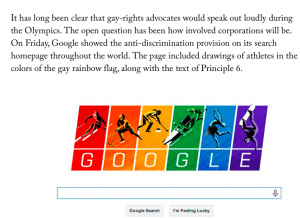Over the course of this semester, I have been introduced to a great deal of new ideas, concepts, and texts in regard to transnational theory and literature. One text and concept that was particularly interesting and innovated my understanding of transnationalism was Kwame Anthony Appiah’s Cosmopolitanism as the concept of Cosmopolitanism is something that I had never previously been exposed to but that really resonated with my personal experiences and understanding of the global community. Appiah’s descriptions and examples of cosmopolitan considerations of global issues are concise and evocative, I really enjoyed reading this text and learning more about his real world applications of these concepts. The blend of Appiah’s personal experiences as a mixed race individual living in Africa, the United States, and Europe endow the book with a really engaging hybridized genre somewhere between non-fiction and personal narrative and autobiography. Appiah’s integration of his personal experiences in Ghana create a relatable dimension in the book that made what could have been a very dry and distanced subject matter very engaging and captivating for me.
I learned a great deal about Cosmopolitanism in the book and how this philosophy extends to ever social issue and culture in the world. Something that particularly resonated with me was his argument about what he refers to as “social trends.” Here Appiah cites examples from both Western and non-Western culture which, since they come to very similar results, shows the global nature of Cosmopolitanism. Appiah’s example of foot-binding in China, for example, necessitates a more profound and wider consideration than is usually directed towards this brutal and archaic practice by a Western audience. Appiah does not let the issue go with this usual approach but rather dissects it further. He incites the ostracism of women with bound feet by the formation of “natural-foot societies” after the end of the foot-binding practice in China to reveal the deeper complexities of just renouncing and developing a repulsed attitude towards a custom that traversed centuries of traditional Chinese culture. I found this idea very interesting as it shows a common habit that I see among American and other Western societies.
The West is so quick to judge and denounce “archaic and oppressive” behaviors in other cultures, whether that be foot-binding in China, the wearing of the hijab in the Middle East, or exclusion of gay athletes in the Sochi Olympics, when in reality we, as a society, have not progressed past many of these issues ourselves. The liberal humanist in all of us wants to support the underdog, to denounce oppression, and to achieve the “American dream” for everyone, however, as Appiah argues, supporting progressive movements for one’s own self-gratitude alone is not conducive to a productive global community nor the progression of these “oppressed individuals” out of their marginalized state. As we saw with FemEn’s anti-veil demonstrations did not lead to the liberation of poor, oppressed, and dominated Muslim women but rather marginalized them from the feminist movement altogether and further oppressed their personal freedom of expression. Rather than projecting its own manifest destiny onto nations that it deems less developed, the West should focus on developing its own social trends. What right do we have to endow oppressed Muslim women with our vision of liberated femininity when American and European women still contend with living in patriarchal environments that perpetuate rape culture, the male gaze, and unequal working conditions?
Another example of this sort of Western hypocrisy that came to my mind while reading Appiah was last year’s Winter Olympic Games in Sochi, Russia. During these Olympic games there was a great deal of controversy regarding Russia’s refusal to allow gay athletes to participate in the events. Western media responded to this decision by Putin—representative of all things communist and anti-American—with outrage, yet, as Appiah reminds us, “…in much of Europe and North America… a generation ago homosexuals were social outcasts and homosexual acts were illegal…” (Appiah 77). Here we see the occidental superiority at work again as it hypocritically denounces a non-Western government for doing the same exact thing that our own society would have supported until very recently. In this way, Appiah’s book really made me reconsider the “developed” versus “developing” labels that we so strictly adhere to in the West. Recent events such as the Ferguson trial prove that we are still in the process of developing ourselves and therefore have no right to look down upon other nations from a position of superiority and haughtiness. I absolutely agree with the movements in support of inclusion of the LGBTQ community in the Sochi Olympics, however, such movements should not come down from a pedestal of superiority but from the employment of our own experiences as a nation as a cautionary tale. 
